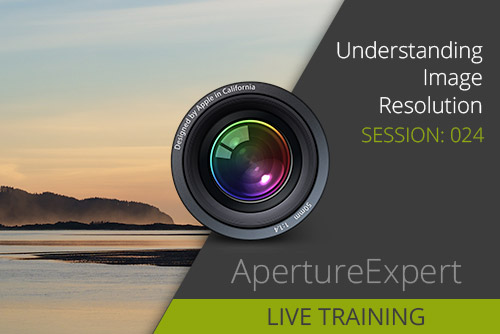ShootDotEdit Updates Aperture Workflow; Includes Cull Service
By PhotoJoseph
February 13, 2013 - 2:33am
ApertureExpert Live Training Session 024: Understanding Resolution is Available Now
By PhotoJoseph
February 10, 2013 - 2:38pm
Tonight! ApertureExpert Live Training Session 024: Understanding Resolution
By PhotoJoseph
February 10, 2013 - 5:27am
Understanding Image Resolution
Live Training Session 024
What’s a pixel, a megapixel, a DPI or a PPI? Learn that and a lot more in this very educational and technical video.
Duration: 00:34 hr
Included with membership
Digital Camera RAW Compatibility Update 4.04 for Aperture 3 and iPhoto ’11
By PhotoJoseph
February 8, 2013 - 6:24am
Starting Fresh: Set up Your Aperture Library for the New Year
By Thomas Boyd
January 19, 2013 - 12:00am



